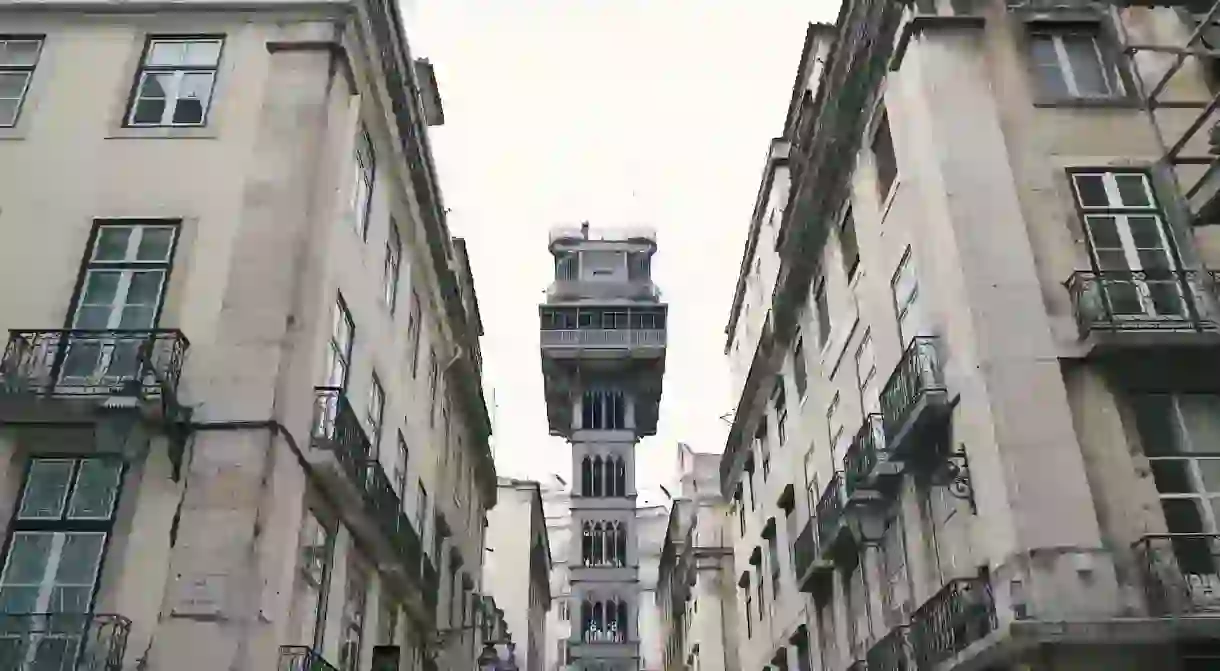A History of Elevador de Santa Justa in 60 Seconds

Visitors walking through Lisbon’s Baixa toward Praça do Rossio may notice a long line of tourists waiting on the stairs at Rua de Santa Justa, especially during prime vacation months of July and August. The attraction catching all this attention is the Santa Justa Lift (Elevador de Santa Justa in Portuguese), an elaborately Gothic wrought-iron lift reaching seven stories high (45 metres, or 148 feet) to a lookout for visitors to enjoy a stunning view over one of Lisbon’s main neighbourhoods.
The Santa Justa Lift was completed in 1902 by Raoul Mesnier du Ponsard, a student of Gustav Eiffel (the architect behind the Eiffel Tower). One of four early-20th-century historic elevators still in operation, Santa Justa was built to provide locals with an easy way to ascend from Baixa’s lower streets to the higher elevations at beautiful Largo do Carmo (Carmo Square) and the only one designed to move vertically. The other three lifts, or funiculars, carry passengers along a diagonal slope. Like the city’s other lifts, Santa Justa initially ran on steam but was transitioned to an electric motor a few years after opening.


From the top of the Santa Justa Lift, visitors will enjoy a bird’s-eye view over the Baixa Pombalina grid of streets as well as a unique (and close) angle of the Carmo Convent ruins, a monumental reminder of the devastation caused by Lisbon’s Great Earthquake of 1755. Although its origins were completely functional, the lift turned into a popular tourist attraction for, much like the bright yellow tram 28.


The ride to the top is fairly short – but be prepared to wait in line – and costs €5.15, plus €1.50 to access the viewing platform. A 24-hour Carris public transportation card includes access to the Santa Justa Lift, not including the viewing deck fee. Anyone wanting to reach the top but avoid the line can simply climb the stairs located along the side of the Carmo Convent.
Santa Justa Lift, Rua do Ouro, Lisbon, Portugal, +351 21 413 8679















